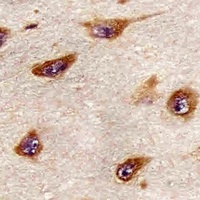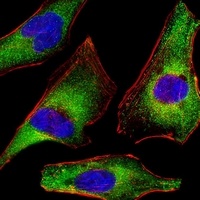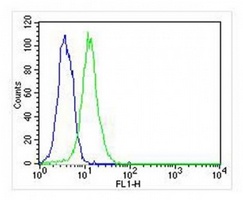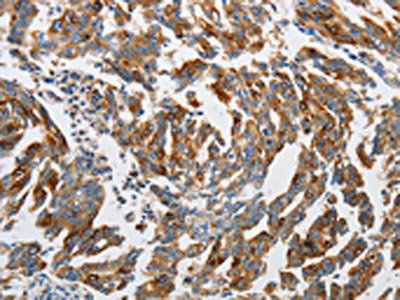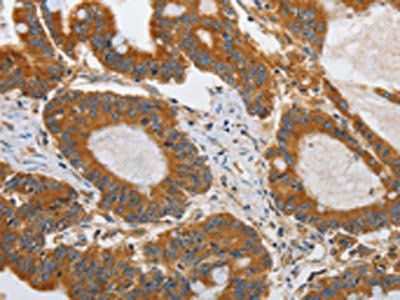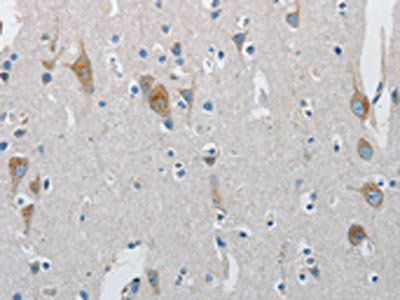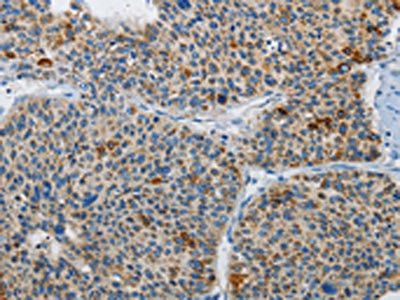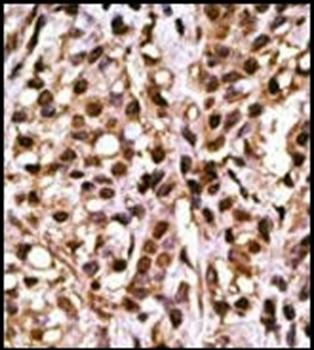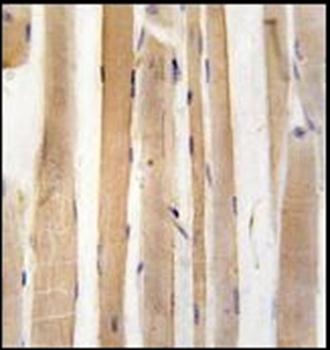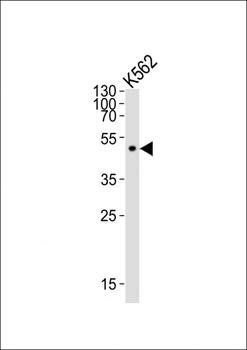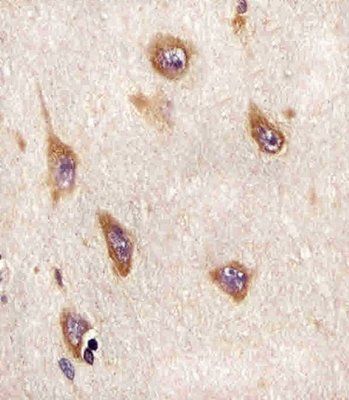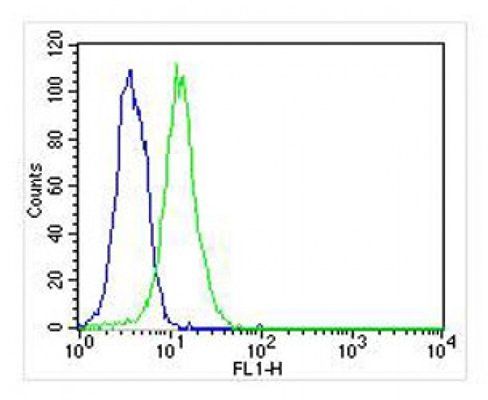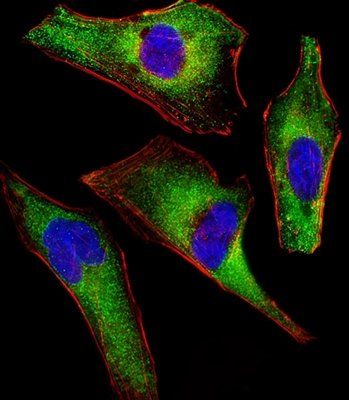You have no items in your shopping cart.
ATG4A Antibody
Catalog Number: orb654294
| Catalog Number | orb654294 |
|---|---|
| Category | Antibodies |
| Description | ATG4A Antibody |
| Species/Host | Rabbit |
| Clonality | Polyclonal |
| Tested applications | FC, IHC, WB |
| Reactivity | Human |
| Isotype | Rabbit IgG |
| Immunogen | A synthetic peptide corresponding to a sequence of human ATG4A (LSKYEDQITIFTDYLEEYPD). |
| Concentration | Adding 0.2 ml of distilled water will yield a concentration of 500 μg/ml. |
| Dilution range | Western blot, 0.25-0.5μg/ml, Human Immunohistochemistry (Paraffin-embedded Section), 0.5-1μg/ml, Human Flow Cytometry, 1-3μg/1x106 cells, Human |
| Form/Appearance | Lyophilized |
| Conjugation | Unconjugated |
| MW | 50 kDa |
| UniProt ID | Q8WYN0 |
| Storage | Store at -20˚C for one year from date of receipt. After reconstitution, at 4˚C for one month. It can also be aliquotted and stored frozen at -20˚C for six months. Avoid repeated freeze-thaw cycles. |
| Alternative names | Cysteine protease ATG4A; AUT-like 2 cysteine endop Read more... |
| Note | For research use only |
| Application notes | Tested Species: In-house tested species with positive results. Other applications have not been tested. Optimal dilutions should be determined by end users. Add 0.2ml of distilled water will yield a concentration of 500ug/ml. |
| Expiration Date | 12 months from date of receipt. |
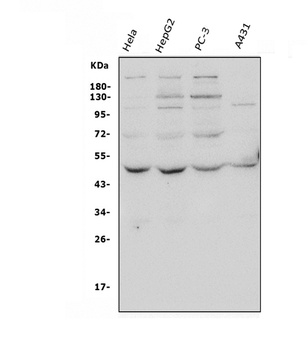
Western blot analysis of ATG4A using anti-ATG4A antibody (orb654294). Electrophoresis was performed on a 5-20% SDS-PAGE gel at 70V (Stacking gel)/90V (Resolving gel) for 2-3 hours. The sample well of each lane was loaded with 50ug of sample under reducing conditions. Lane 1: human HeLa whole cell lysates, Lane 2: human HepG2 whole cell lysates, Lane 3: human PC-3 whole cell lysates, Lane 4: human A431 whole cell lysates. After Electrophoresis, proteins were transferred to a Nitrocellulose membrane at 150mA for 50-90 minutes. Blocked the membrane with 5% Non-fat Milk/TBS for 1.5 hour at RT. The membrane was incubated with rabbit anti-ATG4A antigen affinity purified polyclonal antibody (Catalog # orb654294) at 0.5 μg/mL overnight at 4°C, then washed with TBS-0.1%Tween 3 times with 5 minutes each and probed with a goat anti-rabbit IgG-HRP secondary antibody at a dilution of 1:10000 for 1.5 hour at RT. The signal is developed using an Enhanced Chemiluminescent detection (ECL) kit (Catalog # orb90503) with Tanon 5200 system. A specific band was detected for ATG4A at approximately 50KD. The expected band size for ATG4A is at 45KD.
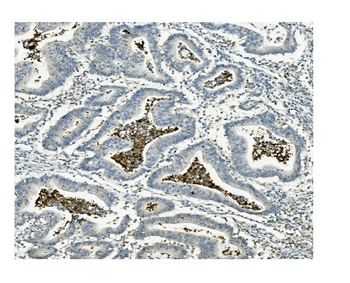
IHC analysis of ATG4A using anti-ATG4A antibody (orb654294). ATG4A was detected in paraffin-embedded section of human rectal cancer tissue. Heat mediated antigen retrieval was performed in EDTA buffer (pH8.0, epitope retrieval solution). The tissue section was blocked with 10% goat serum. The tissue section was then incubated with 1μg/ml rabbit anti-ATG4A Antibody (orb654294) overnight at 4°C. Biotinylated goat anti-rabbit IgG was used as secondary antibody and incubated for 30 minutes at 37°C. The tissue section was developed using Strepavidin-Biotin-Complex (SABC) (Catalog # orb90444) with DAB as the chromogen.
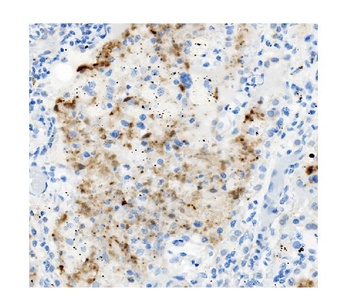
IHC analysis of ATG4A using anti-ATG4A antibody (orb654294). ATG4A was detected in paraffin-embedded section of human lung cancer tissue. Heat mediated antigen retrieval was performed in EDTA buffer (pH8.0, epitope retrieval solution). The tissue section was blocked with 10% goat serum. The tissue section was then incubated with 1μg/ml rabbit anti-ATG4A Antibody (orb654294) overnight at 4°C. Biotinylated goat anti-rabbit IgG was used as secondary antibody and incubated for 30 minutes at 37°C. The tissue section was developed using Strepavidin-Biotin-Complex (SABC) (Catalog # orb90444) with DAB as the chromogen.
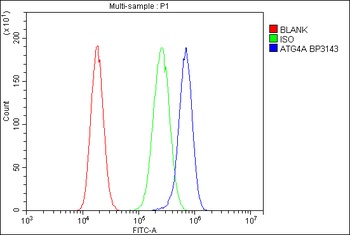
Flow Cytometry analysis of PC-3 cells using anti-ATG4A antibody (orb654294). Overlay histogram showing PC-3 cells stained with orb654294 (Blue line). The cells were blocked with 10% normal goat serum. And then incubated with rabbit anti-ATG4A Antibody (orb654294, 1μg/1x10^6 cells) for 30 min at 20°C. DyLight®488 conjugated goat anti-rabbit IgG (5-10μg/1x10^6 cells) was used as secondary antibody for 30 minutes at 20°C. Isotype control antibody (Green line) was rabbit IgG (1μg/1x10^6) used under the same conditions. Unlabelled sample (Red line) was also used as a control.
Filter by Rating
- 5 stars
- 4 stars
- 3 stars
- 2 stars
- 1 stars


